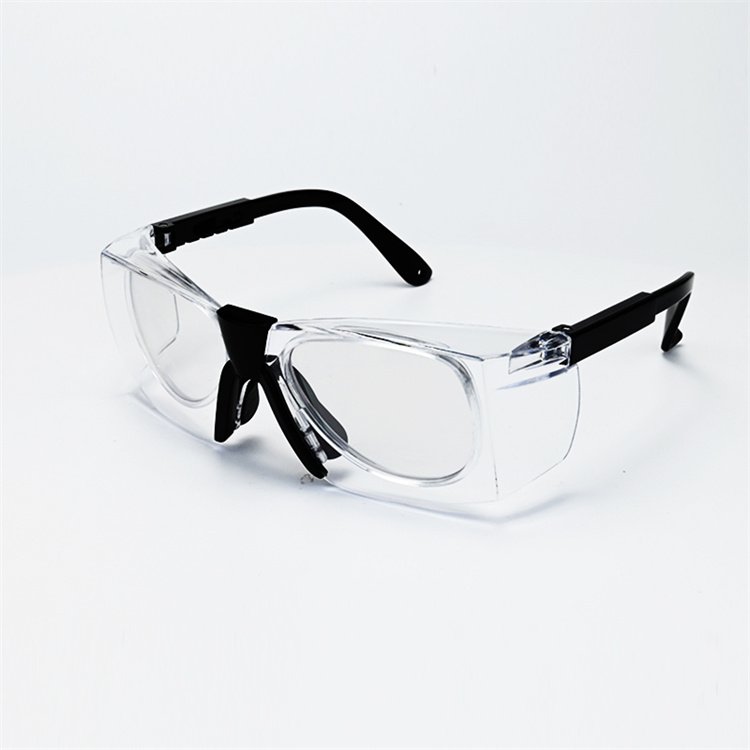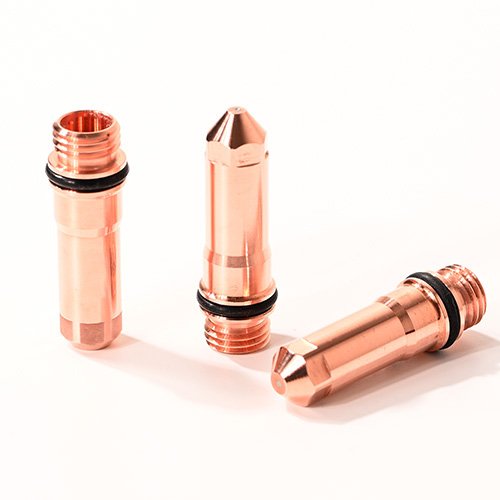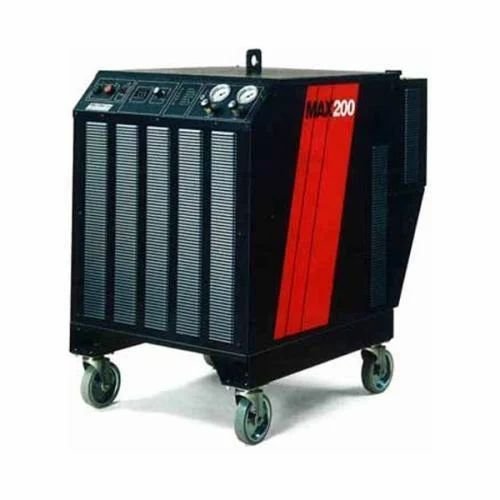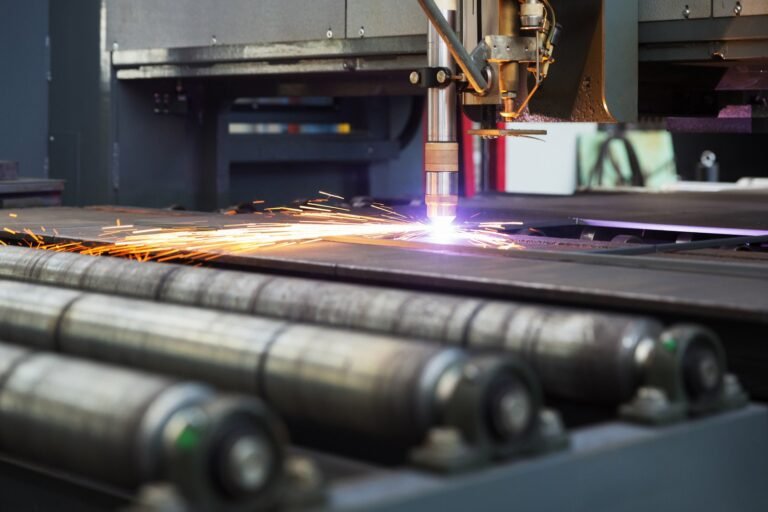The Importance of CO2 Laser Safety Glasses and How to Use Them
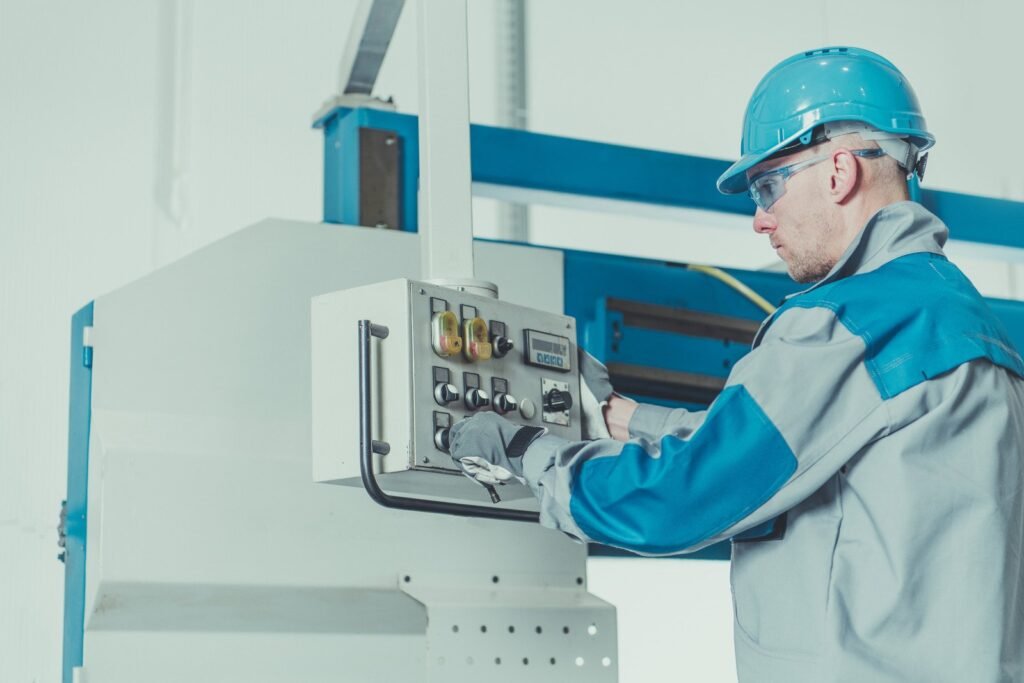
I. Introduction
A brief explanation of CO2 lasers and their uses
CO2 lasers are a type of gas laser that uses carbon dioxide as the lasing medium. They emit infrared light at a wavelength of 10.6 microns (10600 nm) and are commonly used in various applications, including cutting, engraving, welding, and medical procedures. CO2 lasers have gained popularity due to their versatility, precision, and high power output, making them ideal for both industrial and research settings.
The importance of CO2 laser safety glasses
Due to the high power and invisible nature of CO2 laser beams, it’s crucial to use appropriate protective measures, such as CO2 laser safety glasses, to prevent eye injuries and ensure safe operation. CO2 laser safety glasses are specifically designed to block or attenuate the 10600 nm wavelength emitted by CO2 lasers, providing essential protection for the eyes during laser operations. Using the proper safety glasses is not only a matter of personal safety, but it is also a requirement in many workplaces and regulated environments.
In addition to wearing CO2 laser safety glasses, it’s essential to follow other safety guidelines and procedures when operating a CO2 laser system. These guidelines may include proper training, following standard operating procedures, using protective barriers, and adhering to workplace regulations. By taking these precautions and using appropriate safety equipment, you can minimize the risks associated with CO2 lasers and ensure a safe working environment.
II. The need to use CO2 laser safety glasses
Risks associated with CO2 lasers
CO2 lasers can cause severe eye damage, including burns, retinal injuries, and even blindness. The invisible nature of the laser beam makes it challenging to recognize when the laser is in operation, increasing the risk of accidental exposure. Even a brief exposure to the high-intensity infrared light emitted by CO2 lasers can result in permanent eye damage.
Protective measures including safety glasses
Using CO2 laser safety glasses is an essential protective measure to reduce the risk of eye injuries. These glasses are specifically designed to block or attenuate the laser light at the specific wavelength of 10600 nm. In addition to safety glasses, implementing other safety measures such as proper training, following safety guidelines, and using protective barriers can further minimize the risks associated with CO2 lasers.
Types of CO2 laser safety glasses
There are different types of CO2 laser safety glasses available to cater to various power levels, applications, and certifications. Some common types include material-based glasses, wavelength-specific glasses, adjustable and prescription glasses, goggles and wraparound glasses, and certified glasses. Choosing the right pair for your specific laser system is crucial to ensure adequate protection.
When selecting CO2 laser safety glasses, it is important to consider your specific laser system’s power output, wavelength, and application, as well as personal comfort and fit. By choosing the appropriate type of CO2 laser safety glasses and using them correctly, you can significantly reduce the risk of eye injuries while operating a CO2 laser system.
III. Standards and certification
Overview of standards and regulations for laser safety glasses
Laser safety glasses must adhere to specific standards and regulations to ensure their effectiveness in protecting users. In the United States, the American National Standards Institute (ANSI) sets the standards for laser safety glasses, while in Europe, the European Union (EU) regulates these products.
The importance of CE certification
CE certification is an essential indicator of quality and compliance with EU safety standards. Protection safety glasses goggles for 10600nm CO2 laser with CE certification provide assurance that they meet the required safety specifications and can offer proper protection.
What is optical density (OD+)
Optical density (OD) is a critical parameter to consider when selecting laser safety glasses. The OD rating indicates the level of protection provided by the glasses against a specific wavelength of laser light. It is a logarithmic scale, which means that a small increase in OD value corresponds to a significant increase in protection.
The higher the OD rating, the greater the attenuation of the laser light, and thus, the better the protection. For example, an OD of 3 means that the glasses will reduce the laser light’s intensity by a factor of 1,000, while an OD of 4 corresponds to a 10,000-fold reduction.
To choose the appropriate OD rating for your CO2 laser system, consider the following factors:
- Laser power output: Higher power lasers require a higher OD rating for adequate protection. The laser’s power output is typically measured in watts (W) or milliwatts (mW). Consult your laser system’s specifications to determine the power output.
- Beam diameter and divergence: A laser beam with a smaller diameter or lower divergence will have a higher power density, which may require a higher OD rating for proper protection.
- Working distance: If you work close to the laser source, the risk of accidental exposure is higher, and a higher OD rating may be necessary.
- Exposure duration: The risk of eye injury increases with longer exposure times, so you may need a higher OD rating if you work with lasers for extended periods.
Always consult your laser system’s documentation and consult with a laser safety expert to determine the appropriate OD rating for your specific application. Remember that wearing laser safety glasses with the correct OD rating is crucial for reducing the risk of eye injuries while operating a CO2 laser system.
IV. Common misconceptions
The belief that ordinary sunglasses can be used as safety glasses
Ordinary sunglasses are not suitable substitutes for CO2 laser safety glasses, as they do not provide adequate protection against the specific wavelength of CO2 lasers (10600 nm). CO2 laser safety glasses are designed to block or attenuate the laser’s infrared light to prevent eye damage, while sunglasses are typically designed to block visible light and ultraviolet (UV) radiation.
Sunglasses may have some protective features such as UV protection, glare reduction, or polarization, but these features do not provide the necessary protection against CO2 laser light. Using ordinary sunglasses instead of specialized CO2 laser safety glasses can lead to serious eye injuries, as they do not have the appropriate optical density (OD) rating or the ability to block or attenuate the high-intensity infrared light emitted by CO2 lasers.
The belief that all laser safety glasses are the same
Not all laser safety glasses are the same. Different glasses are designed for specific wavelengths and laser types. It’s essential to choose the right glasses for your specific CO2 laser system, such as 40W CO2 laser safety glasses or safety glasses for a 60-watt CO2 laser.
Laser safety glasses are designed to block or attenuate specific wavelengths of laser light, which means that glasses suitable for one type of laser may not provide adequate protection for another type. For example, CO2 laser safety glasses are designed to protect against the 10600 nm infrared wavelength, while glasses for other laser types, like Nd:YAG or diode lasers, would have different wavelength protection requirements.
To ensure the safety of your eyes while working with a CO2 laser, consider the following factors when choosing laser safety glasses:
- Wavelength: The glasses must be designed to protect against the 10600 nm wavelength specific to CO2 lasers.
- Optical density (OD): The glasses should have an appropriate OD rating for the power output of your CO2 laser system, which indicates the level of protection provided.
- Safety standards and certifications: Choose glasses that meet relevant safety standards and certifications, such as ANSI (in the United States) or CE (in Europe), to ensure they have been tested and proven to provide adequate protection.
Failure to replace damaged or expired safety glasses
Damaged or expired safety glasses may not provide adequate protection. Regularly inspect your glasses and replace them as needed to ensure your safety.
V. The importance of proper use and maintenance
Proper installation and adjustment of safety glasses
Properly adjust and secure your CO2 laser safety glasses for a comfortable and snug fit. Make sure they cover your eyes completely and don’t leave any gaps. This ensures that your eyes are fully protected from potential exposure to the laser beam.
Cleaning and storing safety glasses
Keep your CO2 laser safety glasses clean by following the manufacturer’s guidelines, which may include using a soft cloth or a specific cleaning solution. Clean glasses ensure optimal visibility and protection during use.
Store your safety glasses in a protective case when not in use to prevent scratches, damage, or exposure to harmful substances. Proper storage also helps maintain the glasses’ effectiveness and prolongs their lifespan.
Inspecting and replacing damaged glasses regularly
Regularly inspect your CO2 laser safety glasses for signs of wear, damage, or reduced effectiveness. Look for scratches, cracks, or any damage that could compromise their ability to protect your eyes from the laser’s wavelength. Additionally, check for any signs of wear on the glasses’ frame, such as loose or damaged parts.
Replace your safety glasses as needed to ensure continuous protection. Keep in mind that even if the glasses appear to be in good condition, they may lose their effectiveness over time due to natural degradation of the materials or coatings. Always follow the manufacturer’s recommendations regarding the replacement of laser safety glasses.
VI. Frequently Asked Questions
- What type of safety glasses should be worn using a CO2 laser?
When using a CO2 laser, you should wear safety glasses specifically designed for protection against CO2 laser wavelengths. CO2 lasers emit infrared light at a wavelength of 10600 nm, and the safety glasses need to block or attenuate this specific wavelength effectively.
To choose the right safety glasses for a CO2 laser, consider the following:
-
- Ensure the glasses are designed for the 10600 nm wavelength, which is specific to CO2 lasers.
-
- Check the glasses’ optical density (OD) rating, which indicates the level of protection they provide. A higher OD rating means greater protection against the laser light.
-
- Verify that the glasses meet relevant safety standards and certifications, such as ANSI (in the United States) or CE (in Europe).
By selecting appropriate CO2 laser safety glasses and using them correctly, you can significantly reduce the risk of eye injuries while operating a CO2 laser system.
– Do I need safety glasses for a Chinese 60W CO2 laser?
Yes, you need safety glasses for a Chinese 60W CO2 laser. Regardless of the laser’s origin or manufacturer, it is essential to use safety glasses specifically designed for CO2 lasers, which block or attenuate the 10600 nm wavelength. This will help protect your eyes from potential hazards and ensure safe operation of the laser system.
-Will ordinary polycarbonate safety glasses block CO2 laser?
No, ordinary polycarbonate safety glasses will not provide adequate protection against CO2 lasers. CO2 lasers emit infrared light at a wavelength of 10600 nm, which requires specialized CO2 laser safety glasses designed to block or attenuate this specific wavelength. Using the proper safety glasses is essential to ensure eye protection when working with CO2 lasers.
- What color glasses for a CO2 laser?
The color of the glasses for a CO2 laser is not the primary concern; rather, the glasses’ ability to block or attenuate the specific wavelength (10600 nm) of CO2 lasers is most important. CO2 laser safety glasses are designed with specific materials and coatings that provide protection against the laser’s wavelength.
However, some CO2 laser safety glasses may have an orange or red tint to enhance visibility while wearing them. The key factor is to choose glasses based on their protection level, certifications, and suitability for your specific laser system, rather than focusing solely on the color of the lenses.
- Are all laser safety glasses the same?
No, all laser safety glasses are not the same. Laser safety glasses are designed for specific wavelengths and laser types. Different laser systems, such as CO2, Nd:YAG, and diode lasers, emit light at different wavelengths, and each requires safety glasses tailored to provide protection against those specific wavelengths.
When choosing laser safety glasses, it is crucial to select a pair designed for the particular laser system you are working with. Make sure to check the glasses’ specifications, certifications, and compatibility with your laser’s wavelength to ensure proper eye protection.
- Do laser safety glasses work?
Yes, laser safety glasses work when chosen and used correctly. They provide essential protection against eye injuries caused by laser exposure. Laser safety glasses are designed with specific materials and coatings to block or attenuate laser light at particular wavelengths.
To ensure their effectiveness, it is important to:
1.Choose the correct laser safety glasses for your specific laser system, taking into account the laser type and wavelength.
2.Make sure the glasses meet the appropriate safety standards and certifications, such as ANSI or CE certification.
3.Wear the glasses properly, ensuring a secure and comfortable fit that completely covers your eyes without leaving gaps.
4.Follow proper maintenance and storage guidelines, regularly inspect the glasses for damage or wear, and replace them as needed.
By adhering to these guidelines, laser safety glasses can effectively protect your eyes from potential hazards associated with laser operation
VII. Summary
Review the importance of CO2 laser safety glasses and how to use them
CO2 laser safety glasses are crucial for protecting your eyes from the potential hazards associated with CO2 lasers. They are specifically designed to block or attenuate the 10600 nm wavelength emitted by CO2 lasers, providing essential protection during laser operations. Ensure you choose the right glasses for your specific laser system and follow proper use and maintenance guidelines, such as adjusting the glasses for a snug fit, cleaning them regularly, and storing them in a protective case.
Final thoughts and recommendations for the safe use of CO2 lasers with safety glasses
Using CO2 laser safety glasses is an essential step in ensuring a safe working environment when operating CO2 lasers. Always choose certified and appropriate glasses that meet relevant safety standards, such as ANSI or CE certification. In addition, follow proper use and maintenance guidelines, and replace your safety glasses as needed to ensure continuous protection. By taking these precautions, you can minimize the risks associated with CO2 lasers and create a safe and productive work environment.
